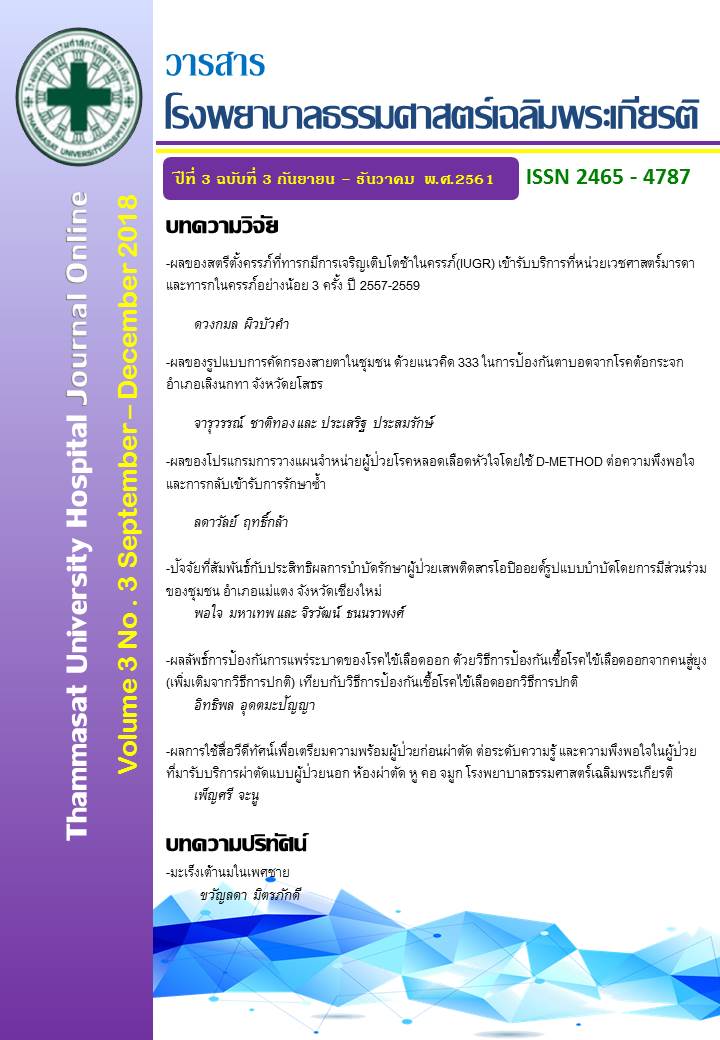Male breast cancer
Keywords:
male breast cancer, risk factorsAbstract
Breast cancer (BC) is the most common type of cancer among women worldwide. Many researches and health organization give priority for educating, understanding and screening in women to reduce the incidence and mortality rates. Unfortunately, male breast cancer is not widely recognized. The incidence of male breast cancer was approximately 2 per 1,000 of breast cancer patients. Male breast cancer has poor prognosis due to small size of the breast. Delayed symptom recognition leads to spreading and invasion to other parts of the body such as lymph nodes and increase its severity. According to these reasons, the diagnosis is commonly made in the metastatic stage. Nowadays, the number of breast cancer studies in male are much less than in female the treatment now is based on female guidelines. Each treatment has different advantages, disadvantages and side effects.
References
Shaw A, Smith B, Howlett D. Male breast carcinoma and the use of MRI. Radiol Case Rep. 2011; 6(3):455:1-2.
Safak KY. Mammography Findings of male breast diseases. J Breast Health. 2015; 11(3):106-10.
National Cancer Institute. Hospital-Based Cancer Registry Annual Report 2012. Cancer rate in Thailand. 2012.
Fentiman I. Male breast cancer: a review. Ecancermedicalscience. 2009; 3:140.
Yalaza M, Inan A, Bozer M. Male breast cancer. J Breast Health. 2016; 12(1):1-8.
Johansen Taber KA, Morisy LR, Osbahr AJ, 3rd, Dickinson BD. Male breast cancer: risk factors, diagnosis, and management (Review). Oncol Rep. 2010; 24(5):1115-20.
Chen L, Chantra PK, Larsen LH, Barton P, Rohitopakarn M, Zhu EQ, et al. Imaging characteristics of malignant lesions of the male breast. Radiographics. 2006;26(4):993 1006.
Kim SH, Kim YS. Ultrasonographic and Mammographic Findings of Male Breast Disease. J Ultrasound Med. 2018;1:1-9.
Giordano SH. A review of the diagnosis and management of male breast cancer. Oncologist. 2005;10(7):471-9.
Serarslan A, Gursel B, Okumus NO, Meydan D, Sullu Y, Gonullu G. Male breast cancer: 20 years experience of a tertiary hospital from the middle black sea region of Turkey. Asian Pac J Cancer Prev. 2015;16(15):6673-9.
Hotko YS. Male breast cancer: clinical presentation, diagnosis, treatment. Exp Oncol. 2013;35(4):303-10.
Sanguinetti A, Polistena A, Lucchini R, Monacelli M, Galasse S, Avenia S, et al. Male breast cancer, clinical presentation, diagnosis and treatment: Twenty years of experience in our Breast Unit. Int J Surg Case Rep. 2016;20Suppl1:8-11.
Onami S, Ozaki M, Mortimer JE, Pal SK. Male breast cancer: an update in diagnosis, treatment and molecular profiling. Maturitas. 2010;65(4):308-14.
Giordano SH, Cohen DS, Buzdar AU, Perkins G, Hortobagyi GN. Breast carcinoma in men: a population-based study. Cancer. 2004;101(1):51-7.
Giuliano AE, Connolly JL, Edge SB, Mittendorf EA, Rugo HS, Solin LJ, et al. Breast cancer-major changes in the American Joint Committee on Cancer eight edition cancer staging manual. CA Cancer J Clin. 2017;67(4):290-303.
Ottini L, Capalbo C, Rizzolo P, Silvestri V, Bronte G, Rizzo S, et al. HER2-positive male breast cancer: an update. Breast Cancer (Dove Med Press). 2010;2:45-58.



